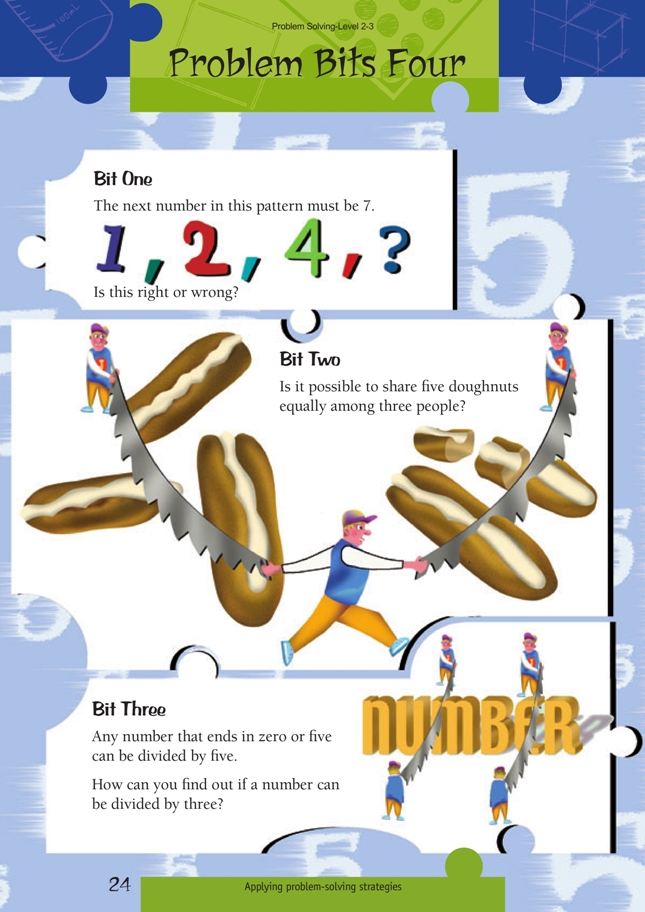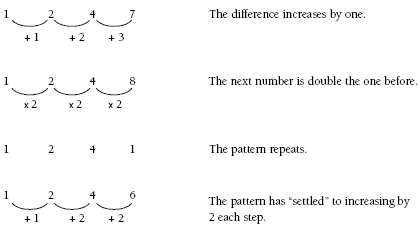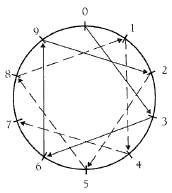These are level 3 number and algebra problems from the Figure It Out series.
A PDF of the student activity is included.
Click on the image to enlarge it. Click again to close. Download PDF (225 KB)
continue a sequential pattern (Problem 1)
share regions into fractions (Problem 2)
explore divisibility rules for 3 (Problem 3)
Bit One
Seven is one possible number to follow in the pattern. It is not the only solution.
For example:
Bit Two
Students may need a physical model of the problems, such as paper strips, to represent the problem. There maybe a number of solution strategies.
Divide each doughnut into three equal bits and share the bits equally. Each person will end up with five thirds.
Give each person one whole doughnut and divide the remaining two doughnuts into three equal bits. Each person will get a whole doughnut and two thirds.
Encourage students to use symbols to describe their findings, such as 1 2/3 for one and two-thirds.
Bit Three
Students will need to list the first multiples of three to see whether there is a pattern, that is 0,3,6,9,12,15,18,21,24,27,30,33,36 ...
If the ones digit pattern is shown on a digit wheel, students will see that every digit is used and that the ones digit pattern recurs (repeats):
Students can check whether the ones digit of a whole number is either 0 or 5 to see whether that number can be divided evenlyby five. They can test the divisibility
for three by adding the digits of the number until they get a single-digt number. If this single-digit number is divisible by three, then the orginal number is divisble by three.
For example:
81 → 8 + 1 = 9 (nine is divisible by three and so is 81
74 → 7 + 4 = 11 → 1 + 1 = 2 (two is not divisible by three and nor is 74).
Answers to Problems
1. 7 is only one possible solution. There are other justifiable solutions, for example, 1, 2, 4, 8 (see notes).
2. Yes. Different methods can be used to divide the doughnuts, but each person gets 12/3.
3. One way is to check whether the sum of the
digits is divisible by 3.




